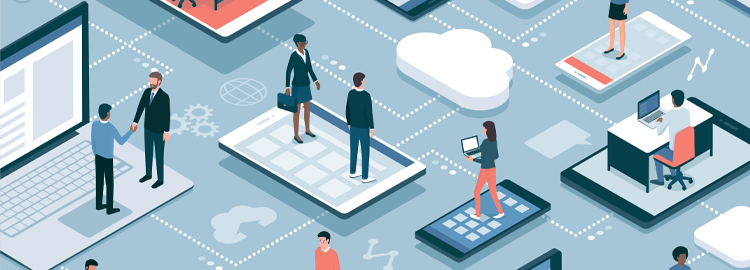The thought of trusting your project’s entire visual identity with a professional graphic, web, or UX designer can be scary for someone who has never worked with one. This post was written to ease your anxiety and help you understand what’s going on behind those trendy, thick-rimmed glasses. Here’s why you can breathe a sigh of relief:
There is a great quote that I like to refer to now and again: “Designers are meant to be loved, not to be understood.” As a designer myself, I have come to terms with how true this statement is. Most of my friends wouldn’t laugh at the joke, “I shot the serif,” or go on a rampage about how awful the font “Papyrus” is (ick, just typing it makes me cringe). My husband, who is a Medical Physics Ph.D student, is just about as far away from having the “eye” as you can get. So trust me when I say that I know how foreign designers can seem to a non-creative person.
We are an interesting breed and we know it. We get that you don’t understand how we think, why we care so much about tiny details you didn’t even notice, or how important “white space” is to our sense of well-being in this cluttered world. But behind those inquisitive gazes and trendy outfits, we are actually really smart—just in a visual way. And guess what? We want to help you and your business. You can trust us, and here’s why:
A lot of people assume that designers are complete artsy-fartsy types—super emotional, irrational, and impractical. The kind of people who would sit around painting and writing poetry if they could (not that that’s a bad thing). And some are. However, we by and large do not consider ourselves to be fine artists. This is for a few reasons:
- We want to actually make a living (haha… but really)
- We like using our creativity in the real world, not only on a canvas
- Our preferred medium may be in print or pixels, not with pencils and paint
- We consider “art” to mostly be “for arts’ sake” whereas “design” is a means of problem-solving—with objectives, goals, and a clear purpose (It’s a long discussion.)

For these reasons, designers tend to land closer to the middle of the right and left-brain spectrum than on the far right. This is great news for you, our client. Why? Because we will give you:
- Creativity with rationale behind it
- Order, organization, and clarity
- Something people WANT to look at (and keep looking at)
- A clear message delivered in a strategic way
- Visually engaging material that your customers will keep interacting with
Those things sound great, right? So don’t fret. We understand that it’s hard sometimes to let go of the familiar. For instance, we recently had a client that was having a hard time letting go of their preconceived design expectations for their website. They were set on a particular color and typeface that didn’t necessarily appeal to their ideal audience. They were hesitant to allow “white space” (empty space for design purposes) on their website and were adamant about filling up every open spot with their company tagline. But, with a little trust and a leap of faith, the client was able to let go of their preconceived notions about design and let us flex our expertise. With a few design comps and a couple of revisions, we were able to show the client that we had their goals in mind the entire time, and brought the project further than they could have ever imagined. The end result? A successful website and a happy client.
So whether you are working with a print designer, web designer, or user interface designer, know that you are in good hands. Our goals are your goals. You can sleep soundly knowing that we are professionals with knowledge and experience under our belts. When we do what we do best, our clients are always happy with the outcome. It’s ok to trust your designer, you will be glad you did!
Need to build a new or update an old website? Beginning a new company and need help with brand identity? Need a rebrand?






